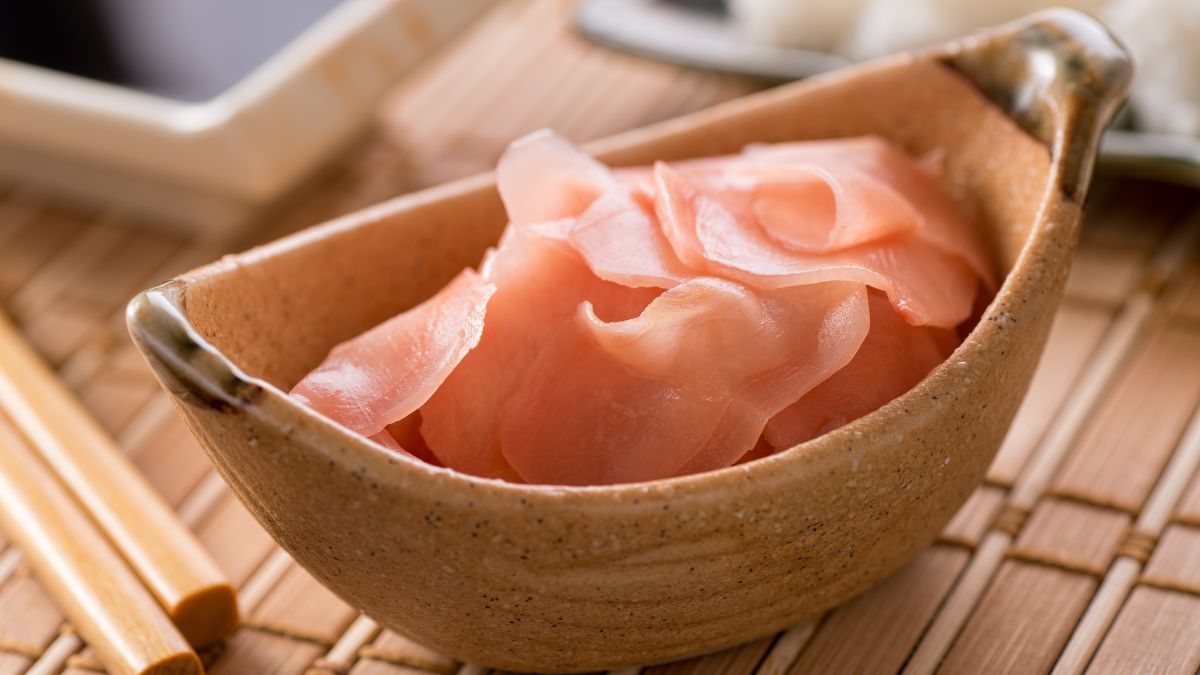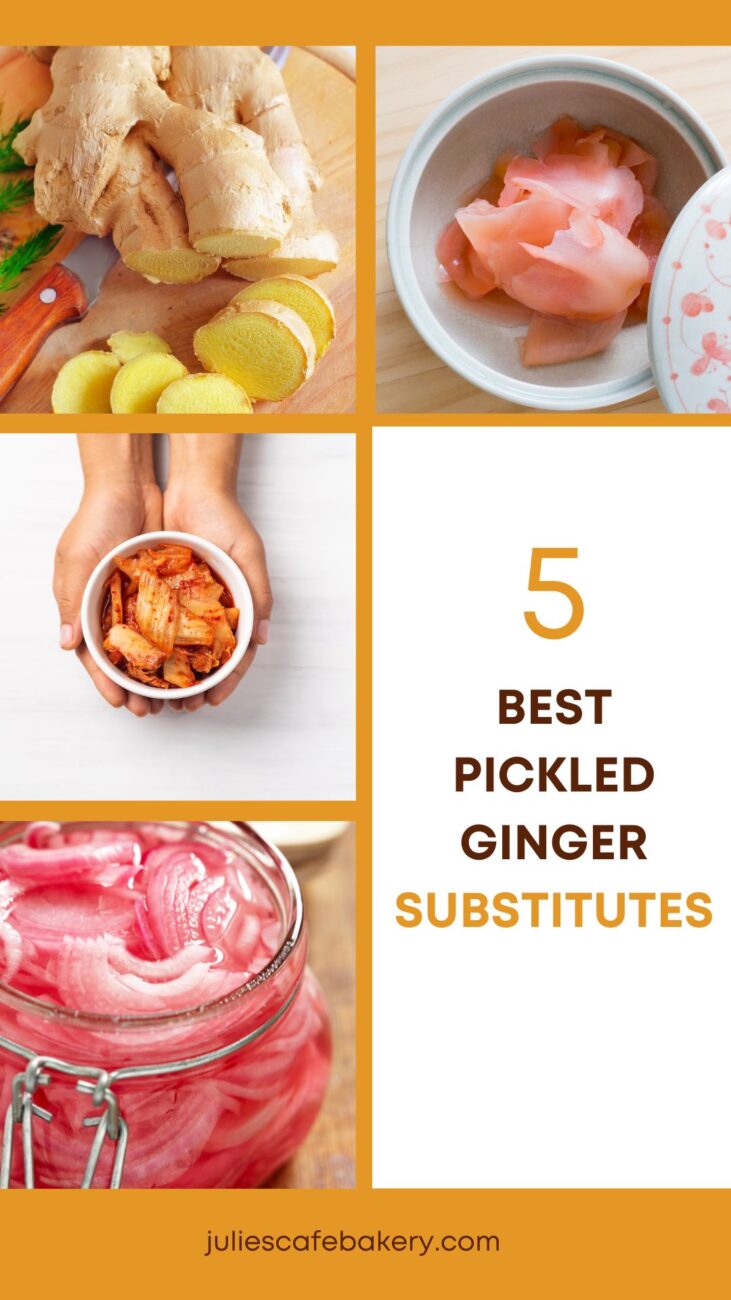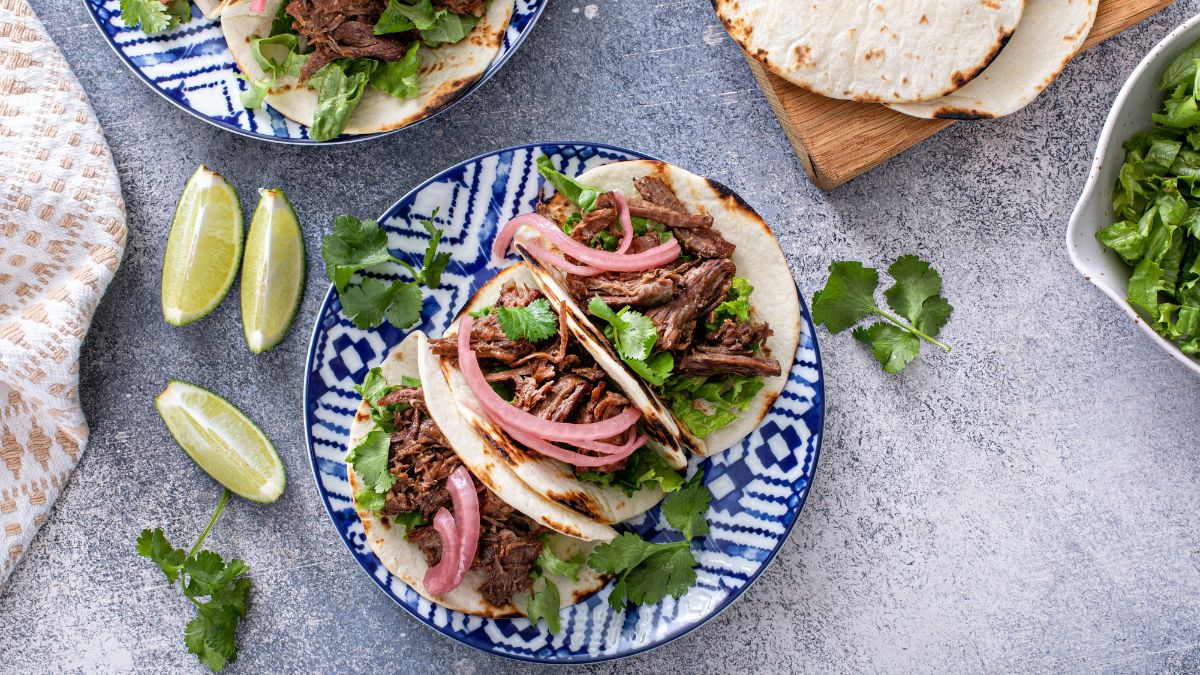5 Pickled Ginger Substitutes & When to Use Them

My love for pickled ginger started ages ago when I went out for sushi with my family for the first time. As I got older, I realized pickled ginger isn’t just for sushi. Its bright, vinegary flavor pairs well with so many foods. Whether you’re looking to spice up a salad, glaze some chicken, or add punch to a marinade, pickled ginger can do it all. But what can you use as a pickled ginger substitute?
Fresh ginger, lemon juice, pickled red onions, and rice vinegar are some of the best alternatives for pickled ginger. However, my personal favorite is definitely kimchi, so I highly recommend giving it a try.
Pickled ginger offers so much more than just a palate cleanser with sushi. Its tangy, spicy kick pairs well with various cuisines and ingredients. Next time you cook, consider swapping in one of these flavorful alternatives instead of plain old ginger. You might discover a new favorite condiment or marinade.
List of Pickled Ginger Alternatives
Pickled ginger is thinly sliced ginger that’s been marinated in a vinegar brine. I like to keep a jar in my fridge — it adds a tangy kick and beautiful pink hue to everything from salads and stir-fries to cocktails.
It is versatile and delicious. Its bright, zesty flavor complements so many foods. But, sometimes, I wish I could use something else instead of it to make things more fun or when I happen to be left without it. These are some of the best substitutes you can use instead of pickled ginger:

Fresh Ginger
When I want to add a little kick of fresh ginger flavor, I reach for the real thing — fresh ginger root.
Fresh ginger is so versatile. When I want spice and zing, I grate it into stir-fries, marinades, and dressings. A little goes a long way, so start with a 1/2 teaspoon of freshly grated ginger and add more to taste.
Fresh ginger also makes a refreshing tea. Just steep a few thin slices of ginger root in hot water for 10-15 minutes. The ginger infuses the water with a pleasantly spicy flavor that warms you from the inside out. A little honey helps balance the bite of the ginger.
You can also pickle fresh ginger yourself. Just peel and slice fresh ginger, then soak it in a mixture of rice vinegar, sugar, and salt for at least a day or two. The ginger will turn pink as it pickles up. Drain before serving and enjoy the floral, tangy flavor as a condiment or palate cleanser.
Whether grated, steeped, pickled, or candied, fresh ginger adds flavor and fragrance to so many foods and drinks. Fresh ginger’s zingy, spicy flavor is an excellent replacement for pickled ginger and adds a kick to any dish.
Lemon Juice
Lemon juice is my second favorite pickled ginger replacement. Its bright, citrusy flavor adds a tangy kick to many savory and sweet dishes.
I like to add a splash of fresh lemon juice to:
- Rice and grain bowls: The acidity helps balance the heartiness of brown rice, farro, and quinoa.
- Seafood: A squeeze of lemon is essential for enhancing the flavor of fish and shellfish. It cuts through richness and prevents oxidation.
- Salads: Lemon juice makes a great light vinaigrette and brightens veggie-based salads.
- Marinades and dressings: I add lemon juice to everything from Asian-inspired marinades to creamy ranch dressing. It adds a punch of flavor without overpowering other ingredients.
- Desserts: Lemon juice is key for tangy lemon bars, tarts, and mousses.
Whether used in place of pickled ginger or on its own, lemon juice is an essential ingredient for balancing flavors and making your food pop. Keep a bottle in your fridge, and you’ll find endless uses for this versatile substitute.
Pickled Red Onions

Pickled red onions are another great stand-in that I use quite often. Their tangy, vinegary flavor pairs perfectly with many of the same foods as ginger, like sushi, grilled meats, and fresh salads.
To make quick pickled red onions:
- Simply slice 2-3 red onions into thin half-moons.
- Combine 1/2 cup rice vinegar or cider vinegar, 1/4 cup water, 2 tablespoons sugar, and 1/2 teaspoon salt in a jar.
- Add the onion slices, seal, and shake to combine.
- Refrigerate for at least 30 minutes before eating. The onions will last up to 2 weeks.
I like to add extras to boost the flavor of my pickled red onions. A few peppercorns, a bay leaf, or a pinch of red pepper flakes provide subtle heat and spice. For a milder flavor, you can also experiment with different vinegars, like champagne or white balsamic vinegar.
Pickled red onions make a great topping for burgers, tacos, sandwiches, and grain bowls in place of pickled ginger.
For an easy appetizer, serve the pickled red onions with soft, spreadable cheese like goat cheese, ricotta salata, or cream cheese on toast points or crackers. They are also deliciously stuffed into deviled eggs or as a condiment for charcuterie boards.
Spicy Kimchi
Kimchi is one of my favorite pickled ginger substitutes. The spicy and sour Korean side dish adds a kick to any meal. Made from fermented napa cabbage, kimchi gets its heat from chili peppers and its tartness from ingredients like garlic, scallions, and fish sauce.
When I want to spice up a bland rice and veggie bowl, I top it with a spoonful of kimchi. The chili-infused cabbage livens up the whole dish. Kimchi also pairs perfectly with lettuce wraps, adding flavor to the fresh veggies and meat inside. For quick kimchi fried rice, I sauté day-old rice, kimchi, garlic, and eggs — it’s a one-pot (skillet, actually) meal packed with flavor.
For a unique twist, I make kimchi deviled eggs, mixing the fermented napa cabbage into the yolk filling. The creamy eggs temper the chili heat, combining two flavors you wouldn’t expect.
Whether used as a condiment, ingredient, or topping, kimchi is a versatile substitute for pickled ginger.
Rice Vinegar

Rice vinegar, made from fermented rice wine, has a subtle sweetness that complements many Asian-inspired dishes.
I like to use rice vinegar when I want just a hint of tangy flavor without overpowering the other ingredients. For example, rice vinegar pairs nicely with marinades and dressings for salads with delicate greens. It’s also great splashed into noodle soups or added to dipping sauces for dumplings.
Compared to the bright pink pickled ginger, rice vinegar has an understated flavor that fades into the background, making it ideal for dishes where you want the main ingredients, like fresh vegetables, herbs, and spices, to shine through.
For the best flavor, choose an unseasoned rice vinegar. Seasoned varieties have added sugar and salt, which can overpower some dishes. Unseasoned rice vinegar allows you to control the flavor and seasoning in your recipe.
What are you making with a pickled ginger substitute? I’m excited to get your best meal recommendations in the comments below!
